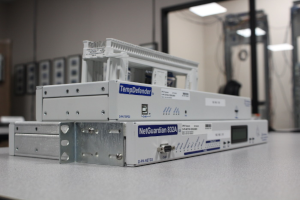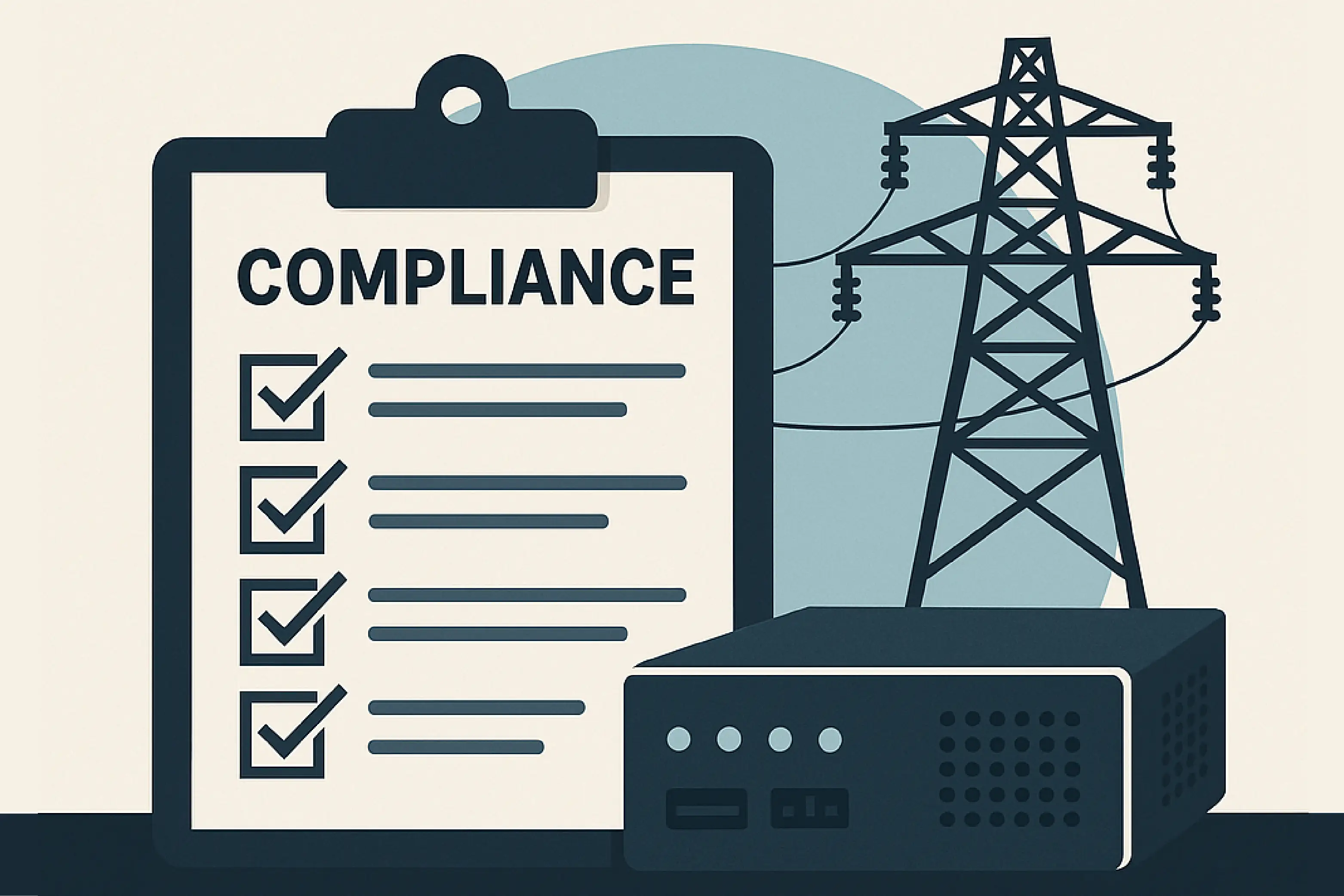Check out our White Paper Series!
A complete library of helpful advice and survival guides for every aspect of system monitoring and control.
1-800-693-0351
Have a specific question? Ask our team of expert engineers and get a specific answer!
Sign up for the next DPS Factory Training!

Whether you're new to our equipment or you've used it for years, DPS factory training is the best way to get more from your monitoring.
Reserve Your Seat TodayWhen you're managing critical infrastructure, you're responsible for uptime, compliance, and protecting equipment worth millions. And, you're increasingly responsible for satisfying regulatory expectations that weren't even clearly defined a few years ago.
That's the exact situation one of our utility clients found themselves in. They had built their remote site visibility using G5 NetGuardian 420 remotes - devices that have performed reliably for over a decade.
However, as new interpretations of NERC CIP (North American Electric Reliability Corporation - Critical Infrastructure Protection) guidelines started raising eyebrows, the client asked the same question you may be asking yourself right now:
Do we need to upgrade? And if so, how much - and how fast?
Let's walk through how that utility approached the issue, what they learned, and how the NetGuardian G6 platform is helping them address modern cybersecurity expectations while staying fully compatible with legacy deployments.

The NERC CIP standards aren't new. But the way they're being interpreted and enforced continues to evolve - especially when it comes to cybersecurity for remote access and information in transit.
At their core, these standards ask utility providers to:
Nowhere in the regulations does it explicitly say, "You must use TLS 1.2" or "You must upgrade to G6 RTUs." Instead, the wording is purposefully broad. That vagueness has created a gray zone that utility managers must navigate.
Some organizations interpret this broadly and feel confident in their perimeter defenses. Others are playing it safe and taking extra steps - replacing or upgrading RTUs that can't support modern encryption standards like TLS 1.2, SSH, or SNMPv3.
The client we spoke with recently had this exact discussion internally: Are our G5s still compliant? Or should we start preparing for the future now?
Let's be clear: the NetGuardian G5 is a battle-tested, ultra-reliable RTU. Thousands of them are deployed nationwide and continue to perform well. But as security requirements continue to tighten, there are hard technical limits that firmware updates just can't overcome.
Specifically, G5 remotes:
During lab testing, TLS sessions on G5 hardware took several minutes to initialize - far too long for practical secure access. The platform just couldn't have been designed with future security standards in mind.
On G6 hardware, the same connection launches in seconds.
The G6 isn't just a newer version. It's a platform engineered specifically to answer the security and usability challenges of today's utility environments. That includes everything from performance upgrades to a dramatically improved web interface.
The G6 platform ready for modern security and compliance because it offers:
These are critical when addressing NERC CIP standards like:
One of the best things about the G6 platform is that it's backward compatible with your existing G5 hardware:
As the client we spoke with confirmed, it's easy to begin using G6 RTUs in parallel with G5s without disrupting existing workflows or retraining field teams.
The old G5 interface is functional, but dated. It uses HTML frames and refreshes every 60 seconds.
G6, in contrast, uses an asynchronous interface with instant navigation. It loads fast, feels modern, and is much easier to use.
This also reduces training time for field techs and increases efficiency during on-site configuration.
During the conversation with the client, they didn't panic or rip and replace. They did what smart organizations do:
They requested a quote for six G6 RTUs to test in their environment.
That small test batch allows them to:
They also discussed exchanging a recently ordered G5 for a G6, just to get started without waste.
That's how you make forward progress without introducing unnecessary risk.
This is where things get nuanced.
There's no line in the regulation that says: "Upgrade all RTUs by December 31st." In fact, compliance remains the responsibility of each individual utility, and the language is often deliberately vague.
That's why utilities are adopting different strategies:
The utility in our recent call decided to take the middle path: Evaluate G6 now, decide later how aggressively to deploy.
Whatever your strategy, the key is to understand your current remote access configuration, review the relevant CIP sections, and decide what risk level you're comfortable with.
If you need help reviewing those sections, DPS has already done the homework. We've highlighted how G6 supports specific NERC CIP requirements and can walk you through it.
We didn't build the G6 just to "have a new model." We built it because we were hearing from clients, like this one, that wanted:
Finalizing the G6 meant that we had delivered - and not just engineered to create obsolescence.
And since we manufacture in-house, we can respond quickly to special firmware needs, protocol support (like Modbus or SNMP mediation), or build-to-order hardware features.
If you're in the same position as the utility in our case study, here's your path forward:
Our client did all of the above - and they're now on a clear path to protecting the future of their network, one step at a time.
You're probably busy. You might not have time to read dozens of pages of regulatory language. That's OK.
That's where we come in.
We've already mapped G6 capabilities to NERC CIP guidelines. We've helped other utilities interpret the vague language. We'll help you figure out what makes sense - technically, financially, and organizationally.
Whether you're just starting to think about compliance, or you've already flagged TLS 1.2 as an internal requirement, we've got you covered.
If your job depends on setting up and maintaining reliable, secure, and compliant remote monitoring, let's talk.
Call us now at (559) 454-1600 or email sales@dpstele.com.
We'll send you:
Your job isn't getting easier, but your tools can be. Let's take the first step on your project together.

Andrew Erickson
Andrew Erickson is an Application Engineer at DPS Telecom, a manufacturer of semi-custom remote alarm monitoring systems based in Fresno, California. Andrew brings more than 18 years of experience building site monitoring solutions, developing intuitive user interfaces and documentation, and opt...